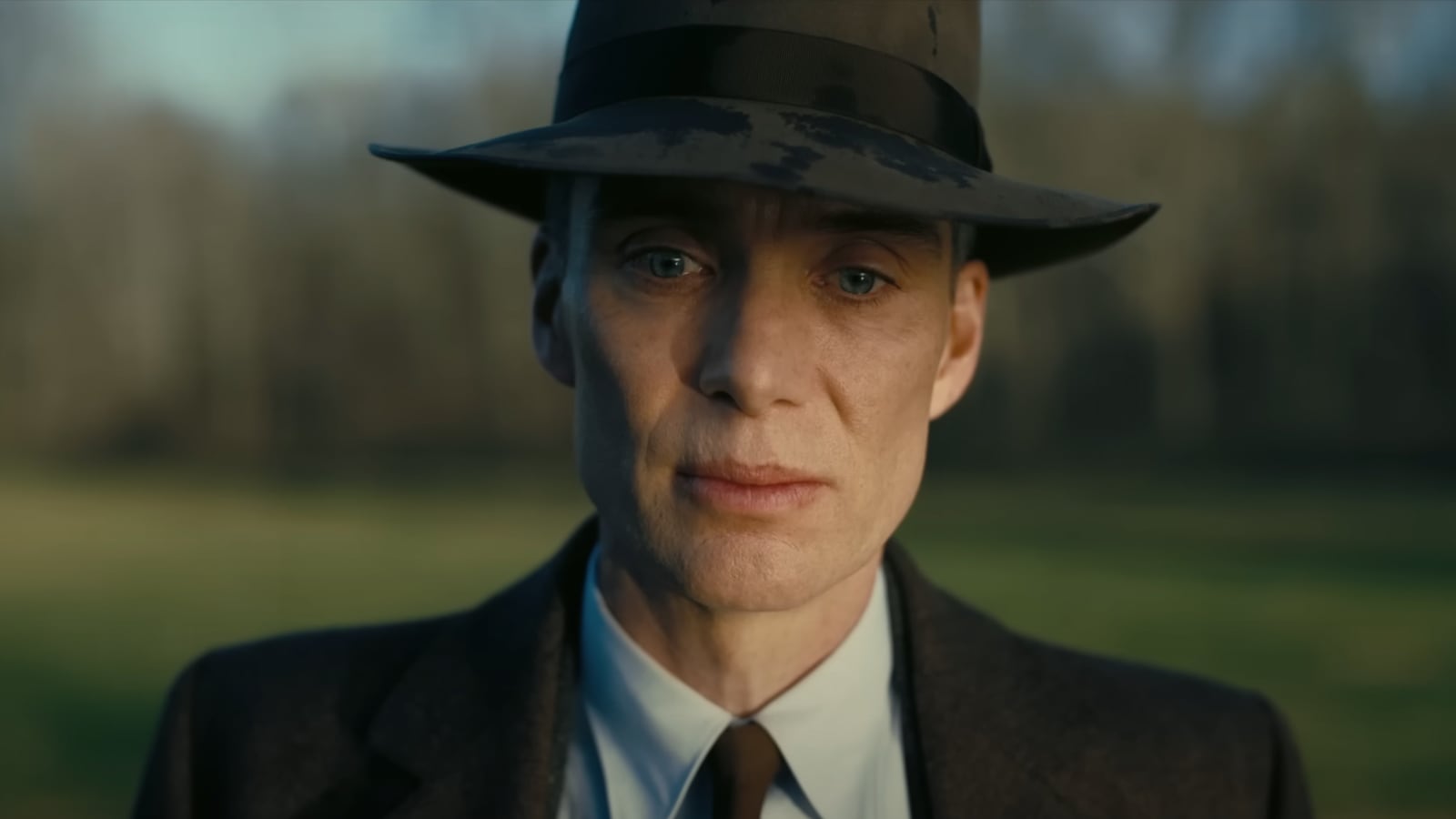Near the beginning of Christopher Nolan’s biopic Oppenheimer, J. Robert Oppenheimer examines a Picasso painting. Femme assise aux bras croisés, painted in 1937, depicts a woman with teal skin as she sits in a chair with her arms crossed. Cillian Murphy’s blue eyes nearly pierce the screen as we observe him staring at it—but what, exactly, is he thinking?
In the film, Oppenheimer—known as the “Father of the Atomic Bomb”—encounters the painting at an inflection point in his studies. One of his idols, the Danish physicist and Nobel Prize winner Niels Bohr (Kenneth Branagh), has encouraged him to leave Cambridge, where he’s been struggling with his lab work, to focus on his real passion: theoretical physics. Newly energized, Oppenheimer begins throwing crystal glasses onto the floor of his apartment to watch them break. By day he’s wandering through museums, and after the sun sets, he’s reading T.S. Eliot’s “The Waste Land.”
In a particularly striking moment that lingers just long enough to feel significant, the physicist spends some time face-to-face with Picasso’s blue woman and her crossed arms. Murphy stares into the painting as though in a trance, as the camera zooms ever closer on her face.
Decades before World War II and the atomic bomb, Picasso and French painter Georges Braque first introduced the world to cubism. The style defied the accepted norms of perspective, depicting its subjects from multiple angles and with no single source of light. In the context of Oppenheimer, the Picasso Oppenheimer observes accentuates the physicist’s journey away from convention and into the unknown. It also foreshadows a bone-chilling sequence later on, in which he addresses a roomful of his peers while hallucinating their faces as appearing distorted.
Perhaps more importantly, Picasso’s perspective-shattering style mirrors Oppenheimer’s contention that the world as we see it is a mirage. One night at a party, he explains to his future wife that according to quantum mechanics, the world we observe “is mostly empty space—groupings of tiny energy waves bound together… [by] forces of attraction strong enough to convince us that matter is solid.”
Why tie yourself to “realism,” if you know that the world around you is merely an illusion?
As one might imagine, the artistic references in Oppenheimer are far from random. In American Prometheus: The Triumph and Tragedy of J. Robert Oppenheimer, the book upon which the film is based, co-authors Kai Bird and Martin J. Sherwin note that his parents amassed a considerable art collection, which included a Picasso—albeit one from his blue period, Mother and Child. When Oppenheimer moved into his apartment at Berkeley in 1934, the authors note, his father gifted him a small Picasso lithograph that he displayed on his wall.
The modernist art and writing in which Oppenheimer immersed himself speaks to his documented desire to transcend the physical world, even as he recognized that, as a scientist, he couldn’t sever himself completely from it. Upon reading Eliot’s famous poem, Bird and Sherwin wrote, he “instantly identified with the poet’s sparse existentialism. His own poetry dwelt with themes of sadness and loneliness.”
During his late twenties, the authors added later, “Oppenheimer already seemed to be searching for an earthly detachment; he wished, in other words, to be engaged as a scientist with the physical world, and yet detached from it. He was not seeking to escape to a purely spiritual realm. He was not seeking religion. What he sought was peace of mind.”
Maybe Oppenheimer found a little inner stillness while looking at Picasso’s work, or perhaps it reflected the chaos that Nolan implies filled the scientist’s mind much of the time. For the audience, however, the painting is a poignant reminder of the rapidly changing world that his devastating creation was ostensibly meant to rescue.






